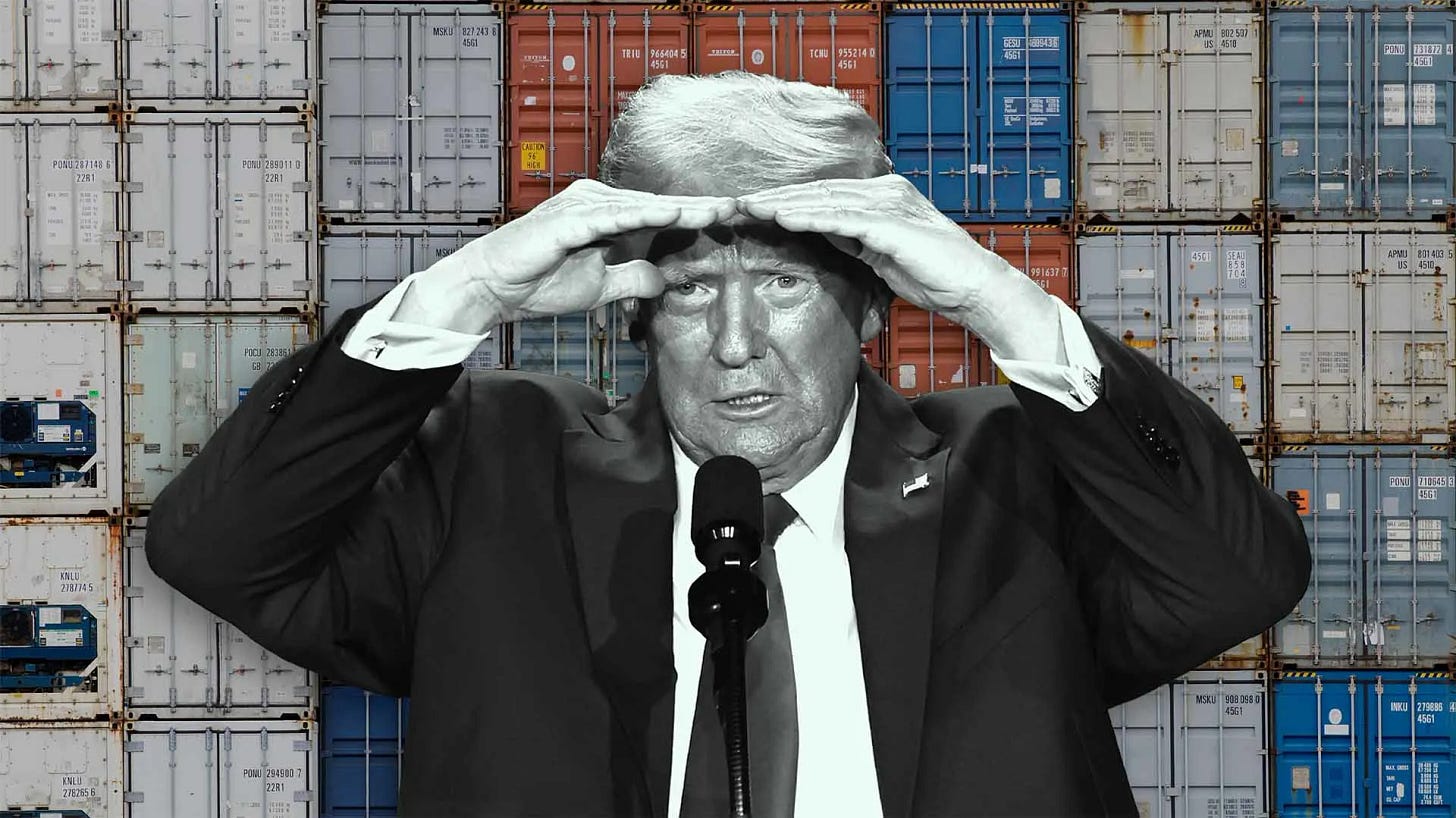The Strategic Vision Behind Trump’s Global Trade Agenda
How Economic Statecraft is Redefining Markets, Central Banking, and Global Trade
Once again, economic statecraft takes center stage, overshadowing the market’s usual focus on economic policy. While yesterday’s central bank moves weren’t shocking (the BOC cut 25bps, the Fed held, and the BCB raised 100bps), their statements made it clear that statecraft was at play.
Even before the meetings, the Financial Times ran a striking headline reminiscent of the 1920s, reporting that the Bank of England was hemorrhaging gold as bullion flowed into the US ahead of possible tariffs. Gold advocates may cite Trump inflation concerns, but the reality is clear—gold was fleeing the UK, where Chancellor Reed’s “go-go growth” pitch was struggling after what the business world saw as a slow-moving budget.
The BOC, faced with the looming threat of 25% US tariffs, abandoned forward guidance. The governor bizarrely claimed that "inflation is over" but admitted that if tariffs hit, the bank will need to act. But how? Cut rates into an inflationary surge and recession (per DeepSeek)?
Meanwhile, the Fed acknowledged that asset prices were elevated and that rates were significantly above neutral(!), yet it’s in no rush to cut, preferring to wait on Trump’s policies. (Our Fed analyst Philip Marey now expects the next cut in June.) Unsurprisingly, President Trump lashed out at the Fed on social media, making it clear that while he proposes, they dispose of rate cuts. However, the administration will welcome Powell’s indication that the Fed is open to US banks facilitating crypto transactions and supporting financial innovation. More digital asset bubbles? Or a deliberate economic strategy, considering that the White House has banned all CBDCs that could compete with ‘Made in America’ digital assets?
To be fair, traditional economists are struggling to keep up with the new era of economic statecraft.
On fiscal policy, the administration is pushing for sweeping tax and spending cuts. The White House may now challenge the 1974 Impoundment Act, arguing that it restricts the executive’s ability to ensure fiscal responsibility. The claim? The president should be able to impound funds that exceed legislative intent or undermine national security through reckless spending. Additionally, the administration seeks greater authority to fire civil servants and rein in the spending of independent agencies. In short, “The President proposes, and Congress disposes” may soon include “and the President opposes.”
On energy, experts suggest that invoking the Defense Production Act could drive oil prices down, especially with the Secretary of the Interior newly added to the National Security Council, given his oversight of critical minerals and mining.
On trade, Commerce Secretary nominee Lutnick supports universal tariffs to bring manufacturing back to the US, but Mexico and Canada can avoid the 25% tariffs if they act quickly—Canada, for instance, by opening its protected agricultural market to US farmers. (And lower energy prices could offset the inflationary impact of tariffs.)
On immigration, President Trump will send up to 30,000 illegal immigrants to Guantanamo Bay, incentivizing an end to what he views as a national security crisis. (Notably, mass federal layoffs could help offset any labor shortages caused by the immigration crackdown.)
On currency policy, this mix of initiatives suggests a stronger dollar, though lower US inflation—and, potentially, lower interest rates—could temper the effect. Meanwhile, the dollar alone would be linked to a US-Western crypto network to promote its usage.
This is what Trumpian economic statecraft looks like. Central banks must adapt, rather than pretending that tariffs and trade shifts exist in a vacuum.
Of course, if the statecraft toolkit fails to integrate properly, we could see vastly different macroeconomic and market outcomes—something we’ve been warning about for months in ‘The Year of Living Dangerously’ presentations.
On that note, EU Commission President von der Leyen has just unveiled a new ‘Competitiveness Compass’ based on the Draghi Report. This ambitious framework includes AI Gigafactories, action plans for biotech, robotics, and space technologies, an EU Startup and Scale-up Strategy, a Clean Industrial Deal, an Affordable Energy Action Plan, an Industrial Decarbonization Accelerator Act, and new trade and investment partnerships. Additionally, it proposes a Horizontal Single Market Strategy, a European Savings and Investments Union, and a Union of Skills, all aimed at modernizing EU economic governance.
Frankly, listing all these bureaucratic initiatives is exhausting, but the key takeaway is clear: this is an expensive, top-down EU industrial policy overloaded with acronyms and grand ambitions but lacking national government buy-in. The Horizontal Single Market Strategy and European Savings and Investments Union alone could be seismic in their implications.
Draghi himself warned that without these changes, Europe faces a “slow agony”—but given global developments, it may not be so slow. Even if implemented, this EU economic model will go head-to-head with China’s efficiency and the US’s Hamiltonian strategy of aggressive deregulation and industrial intervention behind a tariff wall.
As a result, ECB President Lagarde is expected to follow the BOC’s lead and cut 25bps today, while also issuing the standard “if nothing geopolitical happens, then X Y Z” qualifier.
But let’s be honest—forecasting under these conditions is futile. Central banks and markets need to acknowledge the broader geopolitical and economic strategy at play. Economic statecraft isn’t just an abstract theory; it’s shaping global trade and financial systems in real time.






